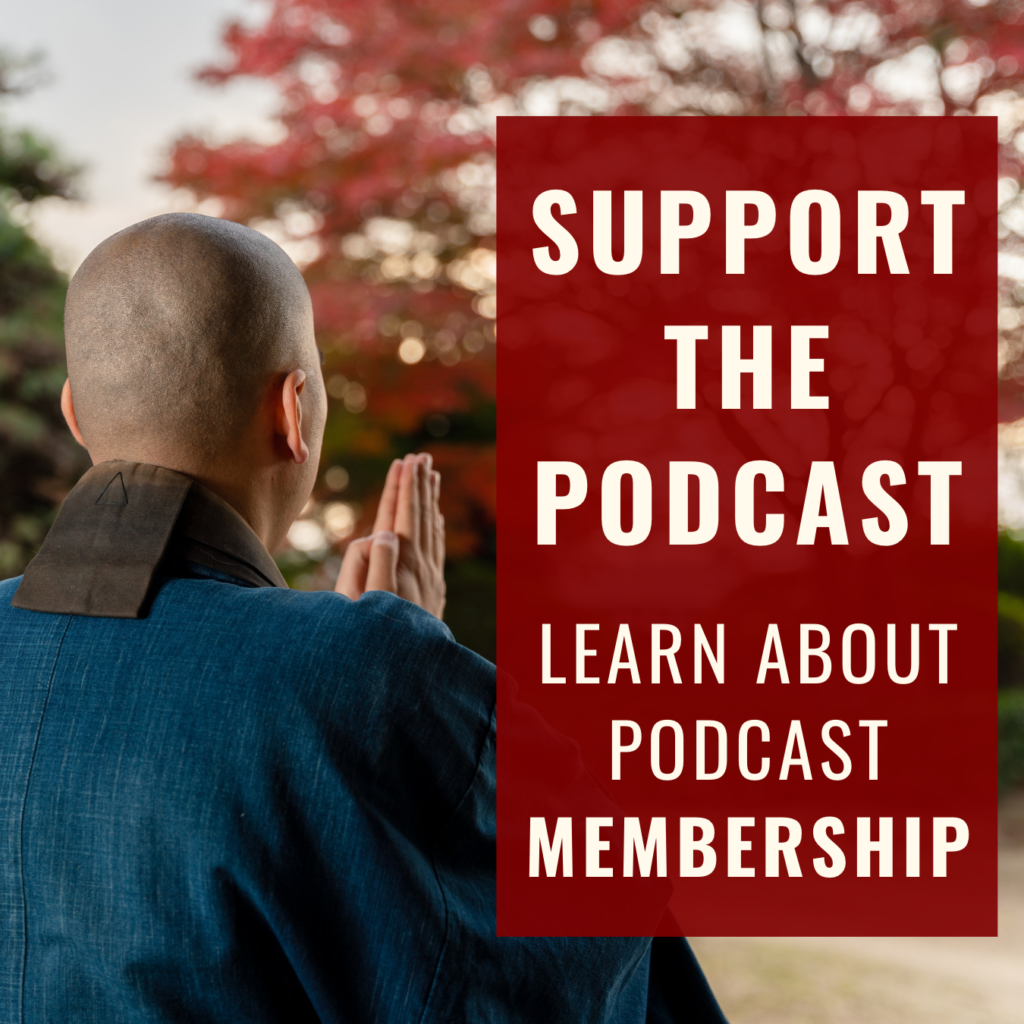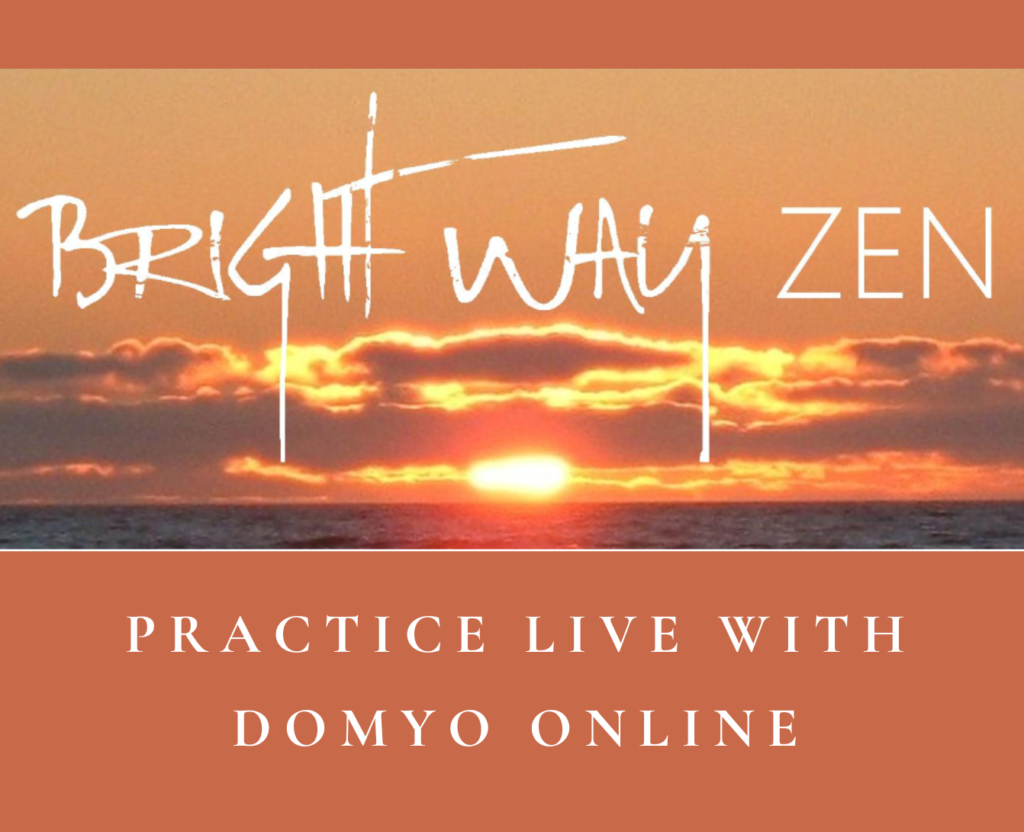
by Domyo | Dec 2, 2025 | Buddhist Practice, Zen Teachings
Zen Buddhism exemplifies practice based in self-power, or jiriki. Pure Land Buddhism exemplifies practice based in other-power, or tariki. These are very different entry gates, but when we examine self-power and other-power more closely, we see that the ultimate goal of practice requires both.

by Domyo | Oct 31, 2025 | Buddhist Texts, Zen Teachings
In this episode I read and reflect on Chapter One of Keizan’s Denkoroku: Record of the Transmission of Illumination. In it, Shakyamuni Buddha holds up a flower and blinks. Keizan says, “No one knew his intention, and they were silent.” Then Mahakashyapa gives a slight smile, and the Buddha acknowledges him as his Dharma heir. What is going on in this koan? Keizan challenges our ideas about awakening, time, causation, and the nature of self.

by Domyo | Jun 30, 2025 | Zen Teachings
This is a teisho – kind of like a cross between a Dharma Talk and guided meditation. I hope my words will point you toward how the Great Matter – that which we seek to awaken to and manifest – is never apart from this very place. Ordinary mind is the Way, and is buddha itself. But what does this really mean? Not that we can’t hope for relief from the turmoil of our minds as we usually experience them! Mind-with-a-capital-M is not equivalent to our thoughts, feelings, emotions, and concepts. Mind is the undisturbed space within which everything arises, so it is always available to us – never apart from this very place.

by Domyo | Apr 30, 2025 | Buddhist Teachings, Zen Teachings
This episode is a Teisho, an encouragement talk that’s meant to be listened to while you are sitting quietly. Zen teachers give Teisho during sesshin, and this amounts to a more formal kind of Dharma talk, almost like a meditation. It’s not meant to be educational. I’m curious as to how it will come off if you listen to it while walking or driving or doing something else. Maybe it’ll be cool. But I recommend sitting still if you’re able. Teisho are generally only given during sesshin and not recorded, but I recreated one from the sesshin I led last week for you.

by Domyo | Oct 24, 2024 | Buddhist Texts, Zen Teachings
It’s challenging to make our Dharma practice continuous – maintaining awareness and appropriate conduct each moment of our lives. In his essay Gyoji, or “Continuous Practice,” Zen Master Dogen doesn’t offer practical tips for mindfulness and pure conduct in everyday life, but instead challenges our limited ideas about what practice is. In this episode (part 2), I continue discussing four points I think Dogen makes about Gyoji.

by Domyo | Oct 2, 2024 | Buddhist Texts, Zen Teachings
Our goal in practice is to live in accord with the truth, or the Dharma – not only while sitting in meditation or studying Buddhism, but every moment of our lives. In other words, we strive to make our practice continuous. It can be extremely challenging to maintain mindfulness and good behavior all the time. How can we make our practice more continuous? Not surprisingly, in his essay “Gyoji,” or Continuous Practice, Dogen does not give us practical tips but instead challenges our limited ideas about what practice is.

by Domyo | Jan 9, 2024 | Buddhist Teachings, Zen Teachings
The Two Truths teaching is another classic Chan/Zen description of Reality-with-a-Capital-R. Reality has two aspects, often called relative and absolute. I call them the “dependent dimension” and the “independent dimension.” I describe this teaching and discuss why it is so important to our practice.

by Domyo | Oct 31, 2023 | Buddhist Texts, Zen Teachings
In my second episode reflecting on Dogen’s “Bussho,” or “The Buddha-Nature,” I discuss how Buddha-Nature is a teaching about our existential koan as human beings. I also talk about how Dogen says we have already got Buddha-Nature, and then explore more fully his teaching about “Total Existence.”

by Domyo | Oct 27, 2023 | Buddhist Texts, Zen Teachings
In his essay “Bussho,” or “The Buddha-Nature,” Dogen explores and expands a classic Mahayana Buddhist teaching. I reflect on a few central concepts from the first paragraph.

by Domyo | Feb 27, 2022 | Zen Teachings
Do we think there’s life after death in Soto Zen? I discuss the Soto Zen perspective on consciousness and whether some kind of consciousness continues after our physical death, and where we find meaning if the self is empty of any inherent essence.















